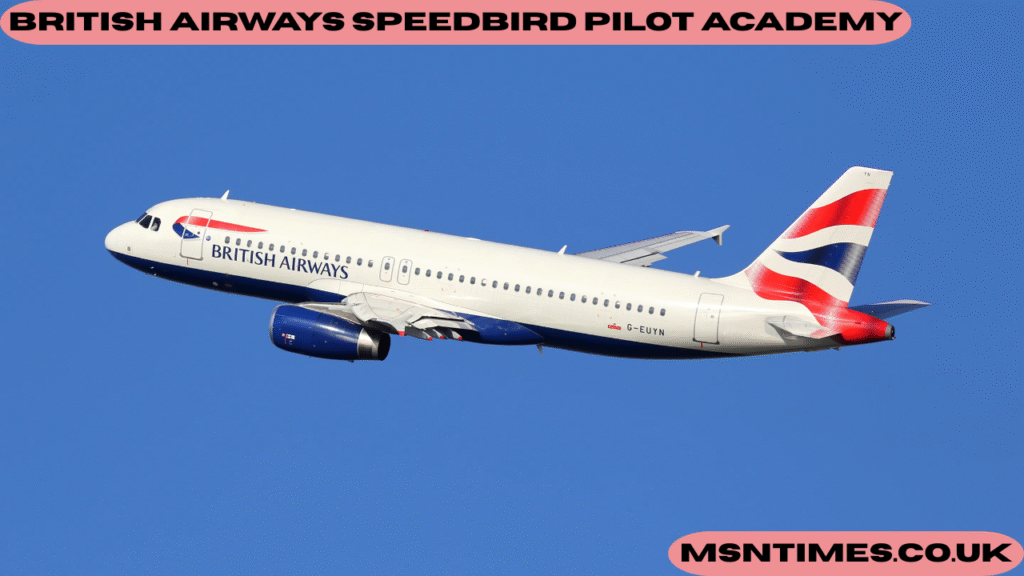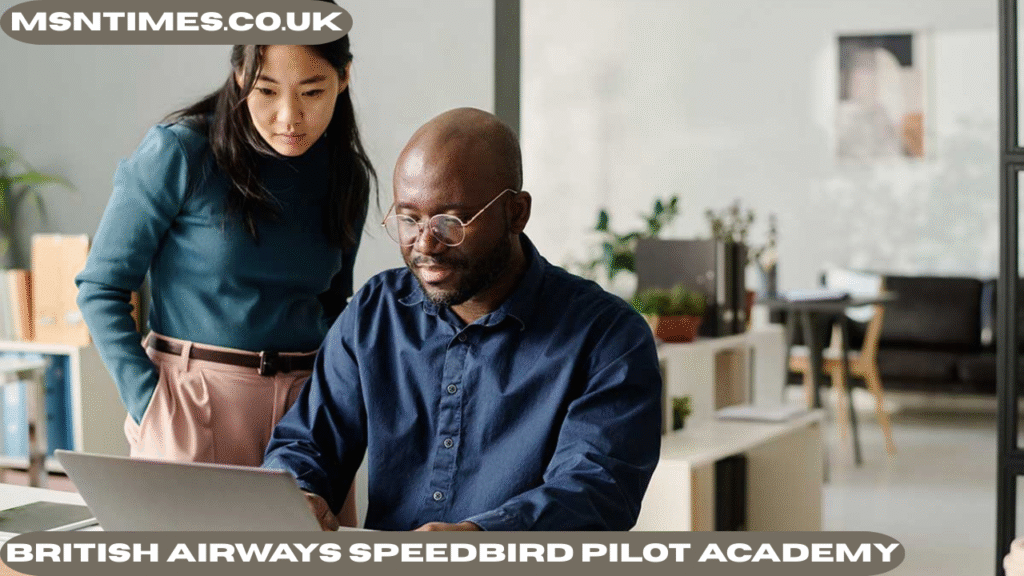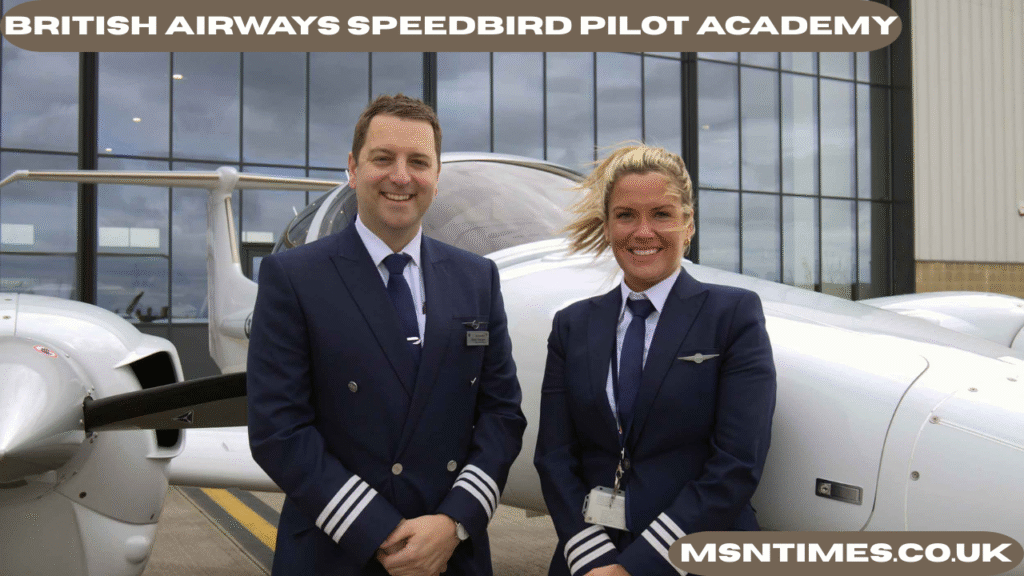The British Airways Speedbird Pilot Academy is a prestigious initiative launched by British Airways to cultivate the next generation of professional pilots. Designed to be both accessible and rigorous, the academy has become a beacon of opportunity for aspiring aviators who may not have otherwise been able to afford commercial flight training. With increasing global demand for pilots, especially in post-pandemic aviation growth, the British Airways Speedbird Pilot Academy?? has taken a vital role in shaping the future of British and international aviation.
Origins and Purpose of the British Airways Speedbird Pilot Academy

The British Airways Speedbird Pilot Academy was created in response to a growing shortage of qualified commercial pilots and a desire to diversify and democratize pilot recruitment. For years, one of the major barriers to entering the aviation profession has been the high cost of training—often exceeding £100,000.
British Airways recognized that many capable and passionate individuals were being shut out simply due to financial limitations. With this academy, the airline provides fully funded training, allowing more people—regardless of background or wealth—to pursue their dreams. The academy is named after British Airways’ iconic call sign “Speedbird,” a nod to the carrier’s historic identity and elite standards.
What Does the Training Program Involve?

At its core, the British Airways Speedbird Pilot Academy?? is an integrated training program that takes cadets with little or no flight experience and prepares them to become fully licensed commercial airline pilots. The training usually spans around 18 months to two years and includes several critical phases:
- Ground School: This phase covers the theoretical knowledge needed for aviation. Topics include meteorology, flight planning, air law, human performance, aircraft systems, and navigation.
- Flight Training: Conducted in actual aircraft, this segment involves practical flying hours, including solo flights, instrument rating training, and multi-engine operations.
- Simulator Training: Cadets spend significant time in high-fidelity flight simulators to practice real-world scenarios in a safe environment.
- Commercial License and Type Rating: Upon completion, cadets earn their Commercial Pilot License (CPL) with Instrument Rating (IR), and eventually a type rating for specific British Airways aircraft, such as the Airbus A320.
Every part of the British Airways Speedbird Pilot Academy curriculum is designed to meet both the standards of the UK Civil Aviation Authority (CAA) and British Airways’ operational requirements.
Who Can Apply to the British Airways Speedbird Pilot Academy??
One of the standout features of the British Airways Speedbird Pilot Academy?? is its inclusive approach to recruitment. The academy accepts applications from individuals across a wide demographic range. Here’s what British Airways typically looks for in applicants:
- Age Requirement: Applicants must usually be at least 18 years old by the start of training.
- Academic Background: A minimum of GCSE-level qualifications in English, Maths, and Science is often required. A-levels or a university degree are considered advantageous but not mandatory.
- Medical Fitness: Candidates must pass a UK Class 1 medical examination to ensure they are physically and mentally fit for the role.
- Passion and Potential: Beyond academic or professional credentials, British Airways values determination, teamwork, leadership potential, and a genuine passion for aviation.
The selection process is competitive and includes aptitude assessments, interviews, group exercises, and simulator evaluations. Only those with strong interpersonal skills, problem-solving abilities, and technical aptitude make it through.
Financial Accessibility and Industry Impact
The most revolutionary aspect of the British Airways Speedbird Pilot Academy?? is its commitment to removing financial barriers. Historically, pilot training has been an expensive endeavor, accessible primarily to those who could afford to self-fund. The Speedbird Academy changes this narrative by offering fully funded training, including tuition, exam fees, and even some living expenses.
This shift is especially significant in the UK aviation landscape. By shouldering the financial burden, British Airways ensures that socioeconomic background no longer dictates access to a pilot career. The program thus opens the cockpit door to a broader, more diverse generation of aviators.
The long-term industry impact is profound. As the airline industry continues to recover from the pandemic and faces an aging pilot workforce, such initiatives are essential. The British Airways Speedbird Pilot Academy not only secures a future talent pipeline but also sets a new benchmark for social responsibility in aviation.
Life After Graduation: Becoming a British Airways Pilot
Successful graduates of the British Airways Speedbird Pilot Academy?? are not simply handed a certificate—they are welcomed into one of the world’s most iconic airlines as first officers. Their initial assignments typically involve flying short-haul European routes on aircraft such as the Airbus A320.
This transition includes:
- Line Flying: Real-time flights under the supervision of an experienced captain.
- Ongoing Training: Regular simulator checks and refresher courses to maintain proficiency.
- Career Progression: Opportunities to move into long-haul operations, command positions, or even training and recruitment roles.
The academy is not just a school; it is the first step in a structured career path at British Airways. For many, it represents the fulfillment of a lifelong dream.
British Airways’ Vision for the Future
British Airways has made it clear that the Speedbird Pilot Academy is not a short-term project but a long-term investment. With an eye on sustainability, innovation, and inclusivity, the airline aims to train hundreds of pilots through the program over the coming years.
The initiative is closely aligned with broader corporate goals, including reducing environmental impact through more efficient aircraft and promoting gender and ethnic diversity in all roles. It positions British Airways not only as a leader in customer service but also in workforce development.
Challenges and Considerations
Despite its many strengths, the British Airways Speedbird Pilot Academy?? is not without challenges. The highly competitive nature of the selection process means that many applicants are turned away, often after investing significant time and effort.
Additionally, cadets must adapt quickly to a high-pressure environment. Aviation training is demanding, and the commitment required is immense. Mental resilience, adaptability, and a relentless work ethic are essential traits for success.
British Airways mitigates these pressures with robust support systems, mentorship, and professional development resources, ensuring cadets are not left to navigate the journey alone.
Frequently Asked Questions (FAQs)
Q1: Is prior flight experience needed to apply to the British Airways Speedbird Pilot Academy??
A1: No. The academy is specifically designed for applicants with little to no prior flight experience.
Q2: What kind of contract do cadets get after graduation?
A2: Graduates typically begin their careers as First Officers on short-haul routes with a clear path to long-haul and command roles.
Q3: How many cadets are accepted each year?
A3: The number can vary, but British Airways usually accepts several dozen cadets annually, depending on fleet and route expansion plans.
Q4: Do cadets need to pay anything at all?
A4: The training itself is fully funded, but there may be incidental expenses such as travel or accommodation not covered by the program.
Q5: Where does the training take place?
A5: Theoretical and simulator training is done in the UK, often at BA-affiliated training centers and flight schools.
Conclusion
The British Airways Speedbird Pilot Academy?? is more than just a training facility—it’s a gateway to one of the most respected careers in aviation. With its innovative approach to funding, its commitment to inclusion, and its world-class training standards, it stands as a beacon for the future of flight.
